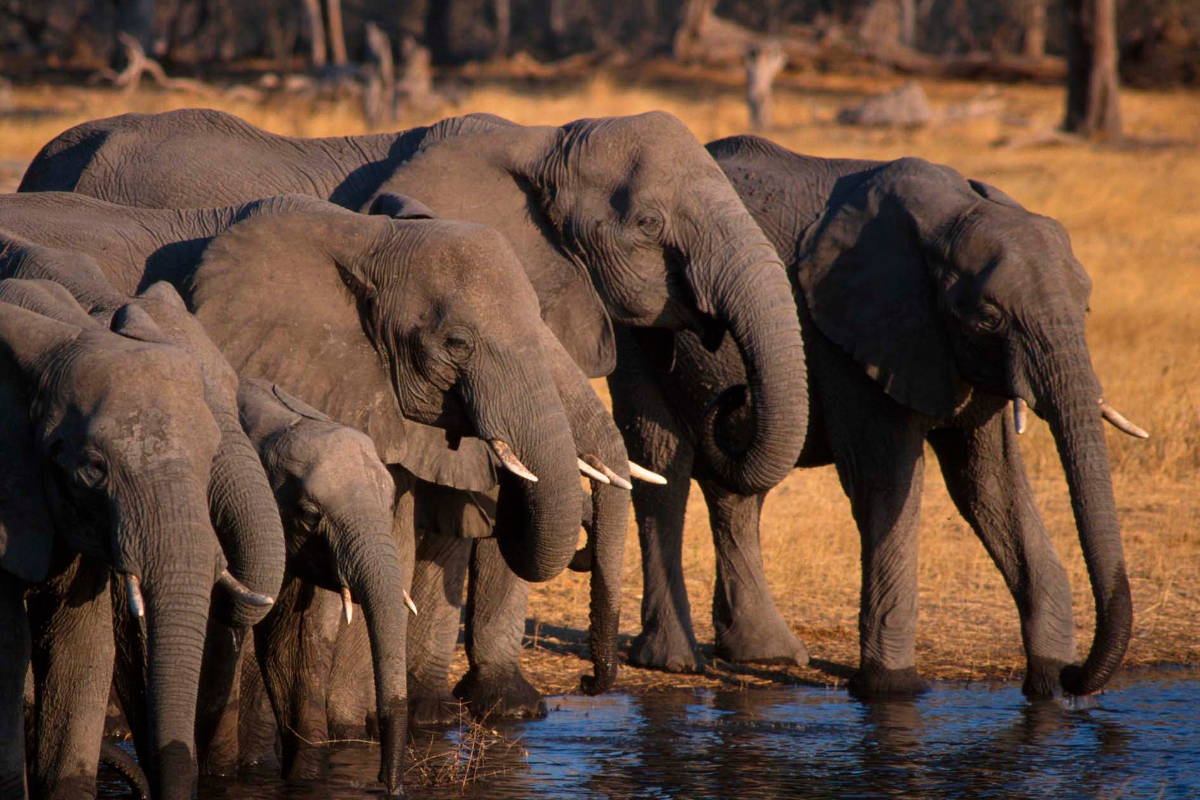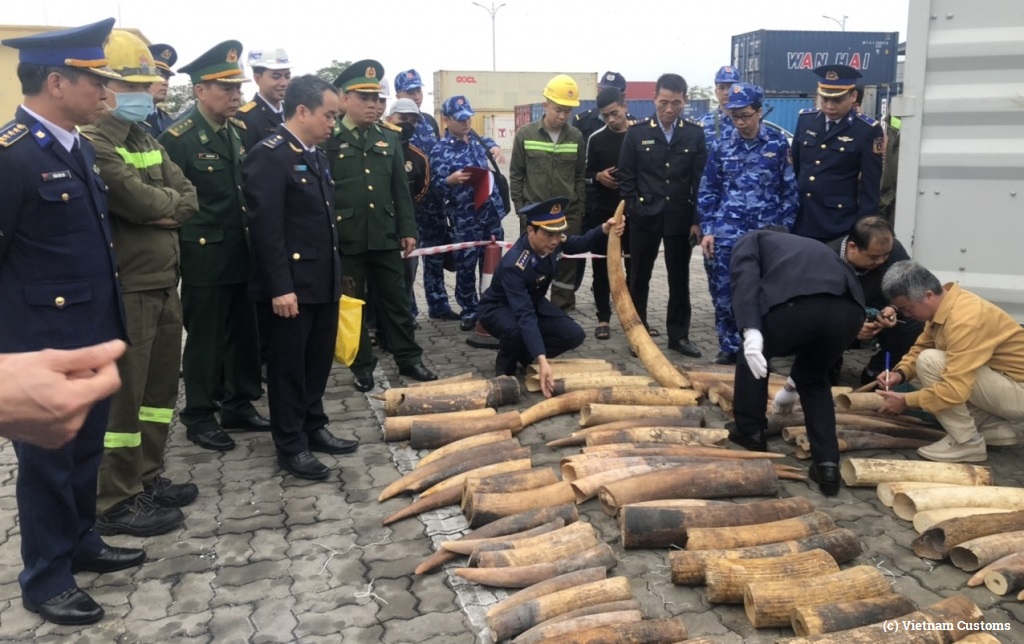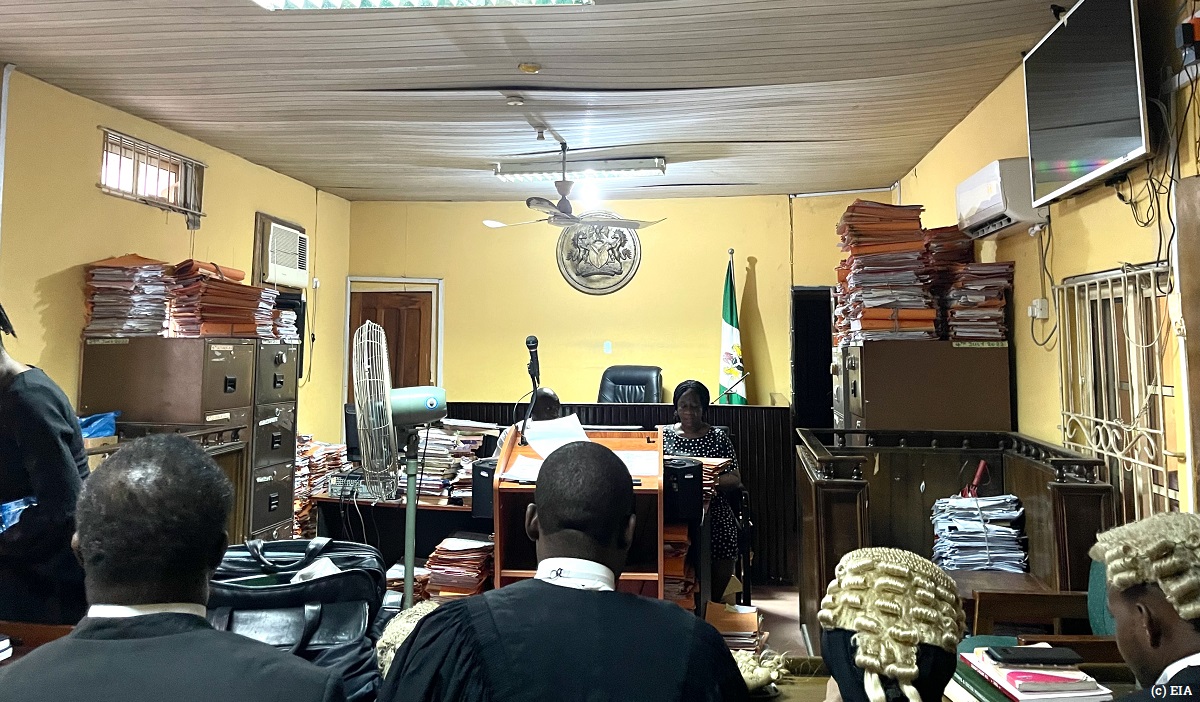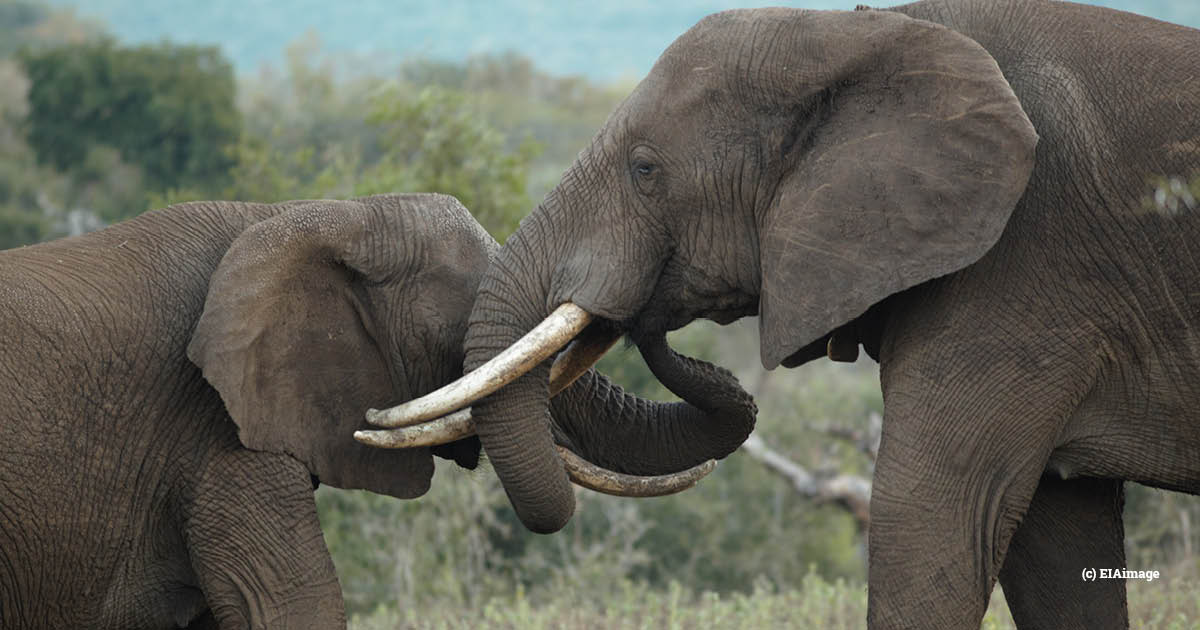Going the extra mile – how EIA’s long-term, systemic approach tackles ivory trafficking



When it comes to campaigning for a future for elephants, EIA’s long-term strategy has been ahead of the curve for decades – and now a new scientific report is arguing for the same approach to protect elephants from poaching and trafficking.
In 1984, EIA launched its Elephant Campaign against a backdrop of rampant poaching and plummeting elephant populations in Africa.
Ever since, our work has focused on the disruption of the organised criminal networks behind elephant poaching and the trafficking of ivory from Africa to Asia. We do this not only by conducting undercover investigations to gather key intelligence, but also undertaking activities that build long-term resilience of key sectors to wildlife trafficking.
A major component of this work involves tackling the corruption facilitating illegal ivory trade and pushing for the adoption and implementation of national laws and international policies which safeguard elephants and hold perpetrators accountable.
In short, a lot of our work takes place behind the scenes and is a long, but necessary, journey to protect elephants by ensuring effective and robust criminal justice responses are in place.
In a very welcome start to 2023, a new scientific study has effectively endorsed our approach by highlighting that activities which promote long-term, multi-sectoral responses and system-level changes are critical to tackling poaching and wildlife crime.
The study found that the illegal killing of elephants is associated with poor national governance, low law enforcement capacity, low household wealth and health and the global prices of elephant ivory. The authors conclude that addressing wider systemic challenges of human development, corruption and consumer demand may therefore help reduce poaching, thus supporting EIA’s work to address these drivers of illegal ivory trade.
In light of this study, we can see how our work aligns closely with its findings and recommendations, clearly demonstrating that our Elephant Campaign is in it for the long haul.

African elephants are facing a broadscale decline (c) EIA
‘’Addressing … systemic drivers of poaching will require wider policies and interventions beyond the traditional remit of biodiversity conservation, such as … reforms to government institutions to promote greater accountability and transparency’’
EIA’s Elephant Campaign has historically advocated for stronger governance and accountability in the fight against ivory poaching and trafficking. Our lengthy investigations and research have indicated that wildlife crime syndicates continue to exploit weak national governance and corruption along the illicit supply and transport chains across Africa and Asia.
EIA has lifted the lid on the links between corruption and the illegal wildlife trade since the 2010s. In Tanzania, we exposed how a devastating elephant poaching crisis in the Selous Game Reserve, fuelled by criminality and corruption, led to the loss of two-thirds of its elephant population between 2006-14. Corruption was a key enabling factor at every stage of the trafficking chain, from game rangers to police and Tanzania Revenue Authority officers facilitating poaching, transportation and shipments of ivory from the country’s ports.
Our work in Mozambique has revealed that Chinese- and Vietnamese-led criminal syndicates are exploiting the country’s vulnerability to corruption at ports to illegally transport significant quantities of ivory from Africa to Asia, resulting in the country’s elephant population falling by a staggering 48 per cent between 2010-15.
Since 2015, we have seen a shift of organised criminal networks involved in illegal wildlife trafficking from East and Southern Africa to West and Central Africa. Our research indicates that porous borders, endemic corruption, weak or absent rule of law, low human development and hotspots of armed conflict make the region exceptionally vulnerable to the activities of wildlife trafficking networks.
Key countries such as Nigeria, the Democratic Republic of Congo and Cameroon have some of the highest levels of organised crime on the continent (as evidenced by the Organised Crime Index), while Transparency International’s Corruption Perceptions Index similarly notes a worsening situation regarding corruption. Our work in this region seeks to address these underlying factors by strengthening governance responses to corruption and criminality.
Nigeria is currently the world’s largest export hub for illegal ivory and pangolin scales. EIA and our regional partners are proud to support the Nigerian Government in its efforts to tackle wildlife trafficking by strengthening national legislation and compliance with international policies. For example, we worked with key Government partners to develop a new Endangered Species Conservation and Protection Bill, which recently passed its first reading in Nigeria’s House of Representatives. If adopted, it will supply Nigerian authorities with the necessary legal tools to tackle wildlife trafficking and protect highly endangered species in the long-term.
Furthermore, at the forefront of our advocacy, EIA has a history of feeding information and recommendations into international processes such as the Conference of the States Parties to the UN Convention Against Corruption for anti-corruption strategies to be deployed in the fight against wildlife crime.
We have also actively pushed for strong policies at the international level through our engagement with the Convention on International Trade in Endangered Species of Wild Fauna and Flora (CITES) to ensure that countries implement and enforce provisions in a manner which prioritises the protection of elephants and other species from unsustainable trade around the globe.
Evidence obtained through EIA investigations and research has been instrumental in securing some of the most important policy outcomes of CITES, such as the 1989 global ban on commercial ivory trade.

Seizures alone are no deterrent to wildlife crime networks (c) Vietnam Customs
‘’… results provide support for the hypothesis that enhanced law enforcement capacity reduces the illegal killing of elephants’’
For decades, law enforcement successes to combat wildlife trafficking have been measured by the number of high-volume confiscations of animals and their parts, including elephant ivory. For example, since 2018 Vietnam has seized at least 19 tonnes of ivory and has emerged as the world’s largest import hub for the contraband, surpassing China including Hong Kong SAR.
While trafficking incidents and interdictions indicate a level of illegal trade and enforcement, EIA works to remind policy- and decision-makers worldwide that seizures alone are no deterrent to wildlife trafficking – for the networks behind the trafficking, these amount to minor business losses, easily recouped with the next illegal shipment.
Similarly, while arrests of wildlife trafficking suspects demonstrate a level of enforcement, arrests alone are not outcomes. In recognition of necessary post-incident investigations to disrupt criminal networks and secure tangible prosecutions, EIA has routinely gathered and disseminated intelligence to law enforcement agencies in multiple countries to strengthen enforcement responses to wildlife trafficking. We also provide capacity-building courses for key government agencies to strengthen criminal justice responses and foster long-term approaches, while our Global Environmental Crime Tracker covers not only trafficking incidents but the progression of wildlife crime court cases as a key indicator of law enforcement success.
In many cases, the intelligence and support provided by EIA to national enforcement authorities has resulted in concrete results; EIA intelligence regarding Chinese-led trafficking networks in Tanzania and Mozambique led to the Anti-Smuggling Bureau of China Customs arresting and prosecuting major traffickers in a long-term blow to the operations of the criminal networks involved.
EIA’s work has highlighted that corruption will continue unless enforcement responses are strengthened. Multiple EIA investigations have detailed how systematic corruption associated with wildlife trafficking threatens biodiversity, the rule of law and the wellbeing of local communities.
For this reason, we will continue to work tirelessly, both at national and international levels, to promote government transparency and accountability to better respond to corruption enabling wildlife trafficking.
We do this by conducting activities to promote the use of investigations into financial crimes such as money laundering, bribery and tax evasion to identify and deter high-level members of wildlife crime networks.
In addition, EIA engages with the private sector in key jurisdictions afflicted by illegal wildlife trade to increase multi-agency approaches to tackle the crime more effectively.

EIA works to strengthen governance, enforcement and anti-corruption measures to tackle ivory trafficking
‘’… results provide … conclusive evidence that illegal elephant killing is related to local poverty.’’
In another interesting finding, the new study highlights that economic deprivation may explain why individuals turn to elephant poaching.
In recognition of these social dynamics, EIA’s Elephant Campaign has long understood that poachers are not the main cause of the crisis, nor do they alone perpetuate the problem. Instead, our investigations reveal the need to target the higher ranks of organised criminal syndicates and corrupt officials, who instigate and oversee the trafficking operations and amass huge levels of illicit wealth in doing so.
As showcased above, EIA works to promote enforcement action and proportionate sentencing to root out the problem at its core, instead of targeting ’low-hanging fruit’.
‘’… demand-driven increases in ivory price may lead to greater incentives for illegal killing’’
Critically, the study finds further evidence that demand for ivory may increase ivory prices, which in turn fuel poaching. Globally, the illegal ivory trade is estimated to be worth billions of dollars a year for the criminal syndicates involved, providing poachers with the financial incentive to kill elephants for their tusks.
Campaigning against the commodification of ivory and elephants has been at the heart of EIA’s work since the early 1980s and we were at the forefront of the campaign to successfully introduce an international ivory ban in 1989 in recognition of the fact that ivory demand drives poaching.
Ever since, we have worked alongside a variety of government and non-government partners to keep the CITES international ivory trade ban in place.
As recently as June 2022, we successfully campaigned for the UK to shut down its domestic ivory market and we continue to campaign against the commodification of ivory and elephants by calling for the closure of all remaining legal ivory markets, including Japan.

For almost 40 years, EIA has been at the forefront of efforts to tackle the criminality and corruption driving illegal wildlife trade, including elephant ivory trafficking.
At the heart of EIA’s work is the formation of key partnerships to drive system-level change to ensure long-term responses to the issue.
This new scientific study is a sound reminder of the value of our work so far, underlining the need for us to continue to fight for a future for endangered wildlife.